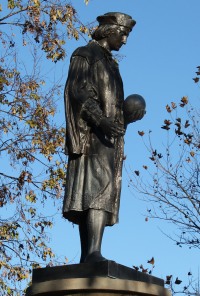What if you had a lottery and everybody who bought a ticket won a big prize?
In 1902, that was a premise of the developers of The Uplands, an upscale subdivision on the West Bluff across Main Street from the then-recently built Bradley Polytechnic Institute.
Sidney Briggs, an Ohio developer, convinced the Peoria City Council to annex 80 acres of the Lydia Moss Bradley Farm and extend streetcar service to serve the proposed neighborhood. Peoria was enjoying the riches of a booming economy, as well as the wealth created by the huge distillery industry and Peoria’s position as a major railroad hub.
Bounded by Main Street, University Street, West Parkside Drive and North Parkside Drive, the new subdivision was probably destined for success anyway, but how do you make it one of the most exciting things to happen in Peoria in a decade?
Marketing! Marketing genius!
What to call the new development? A contest was conducted to name it, with five $10 gold pieces to go to the winner. Not a local contest. A national contest!
More than 4,000 entries were received, with many from across the country. The mayor and a panel of journalists judged the entries. Wastebaskets were filled with entries calling for “Parkview,” since the development overlooked the new Laura Bradley Park. In the end, “The Uplands” was chosen over names as diverse as Brigoria, Ranunculus, Waughbonnsey and Peosota.
In a moment of apparent generosity, Mr. Briggs made a gift to the city of an outstanding sculpture of Christopher Columbus. Chris stood nine feet tall atop a 22-foot base. Did we mention that the statue would be situated in the center of the new Uplands neighborhood, at the intersection of Institute and Columbia Terrace?
With the statue in place, a momentous unveiling was staged with a military band, cannons firing salutes, and speakers and dignitaries galore. To assure a crowd, schoolchildren ran about downtown dispensing free streetcar tokens for transportation.
It worked! A crowd of 25,000 to 35,000 excited Peorians showed up to view the spectacular unveiling and associated hoopla. And, yes, they noticed the neatly laid-out subdivision, with paved streets, curbs, sidewalks and alleys for the entire neighborhood already in place. More than 2,000 new trees had been planted, and sewers were well hidden underground.
Wow! Want to buy a lot? Not so fast. They are not for sale, at least not in the usual sense.
However, for $1,080 you could buy a “syndicate share.” This entitled you to a lot, but not a particular lot. All of the shares were sold in two days, many of them in the frenzied first two hours of the sale. The sale gave a new dimension to the term “land office business.”
Of the 400 lots in the subdivision, 30 strategically located lots around the development were sold off privately, with the condition that construction of a house must begin immediately. (This would assure that the subdivision would not be barren for long.) The remaining 370 lots went into a sort of lottery. In October 1902, those holding a share were invited to the Grand Opera House downtown. Two large rotating drums were on stage. One held the names of the 370 shareholders. The other held the lot numbers of the 370 lots.
Simultaneously, a shareholder name was drawn from one drum and a lot number was drawn from the other. The two were matched, creating a proud owner of a lot in The Uplands. Before the evening was over, some lots were traded and some were sold. A few sold for more than $3,000, a nice return on investment.
The Herald Transcript described the new owners as “merchants and bankers, manufacturers and capitalists, 30 young women who know a good thing when they see it, and the young generation of businessmen. The Uplands’ future population is to be a class of men and women who will fulfill its destiny of beauty and make a colony of homes in the first model addition that Peoria has ever had.”
It was required that all homes be two stories tall and of good quality. An annual fee of $1.50 per lot was assessed to hire a crew to maintain properties which had not yet been built upon.
As agreed, some owners began construction immediately; others not long after. Several outstanding architects designed the homes. The first resident moved into her home on May 13, 1903.
As you drive down an Uplands street today, every home is distinctive and unique, yet there is a uniformity of relative size and class that permeates every dwelling. An abundance of trees continues to grace every street. Stand on any street corner in The Uplands and there is an indescribable sense of place.
At 108 years and counting, The Uplands today is probably the most stable neighborhood south of War Memorial Drive. It continues to be a delightful place in which to raise a family. The streetcar line is long-gone, but it’s a five-minute drive to downtown. The Columbus statue moved down the street to reside in Bradley Park at the terminus of Columbia Terrace. Laura Bradley Park still attracts the young and the young at heart. The Uplands has lived up to the dream.
But why didn’t they name it “Parkview?” iBi
Jim Bateman lived in The Uplands for 48 years, in two different homes on N. Parkside Drive. Linda Sahn, who assisted with research for this story, lived in The Uplands for 30 years, in two different homes on W. Parkside Drive.



